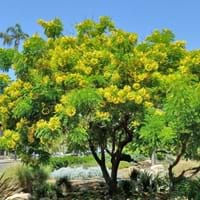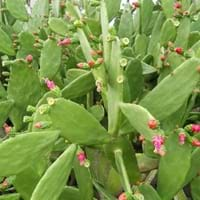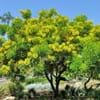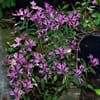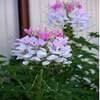Life Span
Perennial
Perennial
Type
Flowering Plants, Tree
Cactus or Succulent
Types
Not Available
Not Available
Habitat
Not Available
Desert
USDA Hardiness Zone
Not Available
8-12
AHS Heat Zone
Not Available
12-5
Sunset Zone
Not Available
H1, H2, 8, 9, 12, 13, 14, 15, 16, 17, 18, 19, 20, 21, 22, 23, 24
Habit
Upright/Erect
Upright/Erect
Flower Color
Yellow
Yellow, Red, Orange
Flower Color Modifier
Bicolor
Not Available
Fruit Color
Not Available, White
Reddish Plum
Leaf Color in Spring
Dark Green
Green
Leaf Color in Summer
Dark Green
Green
Leaf Color in Fall
Dark Green
Green
Leaf Color in Winter
Dark Green
Green
Leaf Shape
Pinnate
Globe shaped
Plant Season
Spring, Summer, Fall
Spring, Summer, Fall, Winter
Sunlight
Partial shade, Full Shade
Full Sun, Partial Sun
Growth Rate
Medium
Medium
Type of Soil
Loam
Loamy, Sandy, Well drained
The pH of Soil
Acidic, Neutral, Alkaline
Acidic, Neutral, Alkaline
Soil Drainage
Well drained
Well drained
Bloom Time
Indeterminate, Summer
Spring, Late Spring, Early Summer
Tolerances
Drought
Drought, Salt
Where to Plant?
Ground
Ground, Pot
How to Plant?
Seedlings, Stem Planting
Grafting, Seedlings, Transplanting
Plant Maintenance
Medium
Medium
Watering Requirements
Requires regular watering
Does not require lot of watering, Water once every two or three weeks, Water when soil is dry
In Summer
Lots of watering
Lots of watering
In Spring
Moderate
Moderate
In Winter
Average Water
Average Water
Soil pH
Acidic, Neutral, Alkaline
Acidic, Neutral, Alkaline
Soil Type
Loam
Clay, Loam, Sand
Soil Drainage Capacity
Well drained
Well drained
Sun Exposure
Partial shade, Full Shade
Full Sun, Partial Sun
Pruning
Requires very little pruning
Prune if you want to improve plant shape, Prune ocassionally, Remove dead leaves
Fertilizers
All-Purpose Liquid Fertilizer
All-Purpose Liquid Fertilizer
Pests and Diseases
Red blotch, Thripes
Aphids, Caterpillars, Cochineal insect, Mealybugs, Nematodes, Red spider mite, Rodent, Root rot, Scale, Slugs, Snails, Thripes, Viruses, Worms
Plant Tolerance
Drought
Drought
Flower Petal Number
Single
Single
Foliage Texture
Bold
Bold
Foliage Sheen
Matte
Matte
Attracts
Not Available
Aphids, Birds, Rodents
Allergy
Not Available
Not Available
Aesthetic Uses
Showy Purposes
Cottage Garden, Showy Purposes
Beauty Benefits
Not Available
Nourishes scalp, Reduce Bruises, Remove blemishes
Environmental Uses
Air purification
Air purification
Medicinal Uses
No Medicinal Use
Antioxidants, Diabetes, Diarrhea, Hangover
Part of Plant Used
Whole plant
Flowers, Leaves
Other Uses
Used as Ornamental plant
Biomass for fuel, Employed in herbal medicine, Fine spines and trichomes are used as fiber for weaving, Oil is used for aromatherapy, Showy Purposes, Used As Food, Used as Ornamental plant, Used in construction, Used in Furniture
Used As Indoor Plant
No
No
Used As Outdoor Plant
Yes
Yes
Garden Design
Shady Tree, Showy Tree
Container, Feature Plant, Fruit, Fruit Tree, Hedges, Houseplant, Mixed Border, Rock Garden, Wall
Botanical Name
Cassia leptophylla
OPUNTIA ficus-indica
Common Name
gold medallion tree
Indian fig opuntia, Barbary fig, cactus pear, spineless cactus
In Hindi
gold medallion tree
Opuntia ficus-indica
In German
gold medallion tree
Opuntia ficus-indica
In French
gold medallion tree
Opuntia ficus-indica
In Spanish
árbol medallón de oro
Opuntia ficus-indica
In Greek
χρυσό δέντρο μετάλλιο
Φραγκοσυκιά
In Portuguese
árvore medalhão de ouro
Opuntia ficus-indica
In Polish
Drzewo Medalion złota
Opuntia ficus-indica
In Latin
aureus arbore
Opuntia ficus-indica
Phylum
Magnoliophyta
Magnoliophyta
Class
Magnoliopsida
Magnoliopsida
Order
Fabales
Caryophyllales
Family
Fabaceae
Cactaceae
Genus
Cassia
Opuntia Mill
Clade
Angiosperms, Eudicots, Rosids
Angiosperms, Eudicots
Tribe
Not Available
Opuntieae
Subfamily
Not Available
Opuntioideae
Number of Species
Not Available
Not Available
Season and Care of Cassia Leptophylla and Barbary Fig
Season and care of Cassia Leptophylla and Barbary Fig is important to know. While considering everything about Cassia Leptophylla and Barbary Fig Care, growing season is an essential factor. Cassia Leptophylla season is Spring, Summer and Fall and Barbary Fig season is Spring, Summer and Fall. The type of soil for Cassia Leptophylla is Loam and for Barbary Fig is Loamy, Sandy, Well drained while the PH of soil for Cassia Leptophylla is Acidic, Neutral, Alkaline and for Barbary Fig is Acidic, Neutral, Alkaline.
Cassia Leptophylla and Barbary Fig Physical Information
Cassia Leptophylla and Barbary Fig physical information is very important for comparison. Cassia Leptophylla height is 1,300.00 cm and width 1,200.00 cm whereas Barbary Fig height is 240.00 cm and width 180.00 cm. The color specification of Cassia Leptophylla and Barbary Fig are as follows:
Cassia Leptophylla flower color: Yellow
Cassia Leptophylla leaf color: Dark Green
Barbary Fig flower color: Yellow, Red and Orange
- Barbary Fig leaf color: Green
Care of Cassia Leptophylla and Barbary Fig
Care of Cassia Leptophylla and Barbary Fig include pruning, fertilizers, watering etc. Cassia Leptophylla pruning is done Requires very little pruning and Barbary Fig pruning is done Prune if you want to improve plant shape, Prune ocassionally and Remove dead leaves. In summer Cassia Leptophylla needs Lots of watering and in winter, it needs Average Water. Whereas, in summer Barbary Fig needs Lots of watering and in winter, it needs Average Water.
